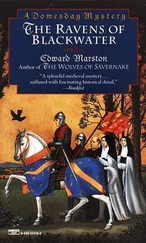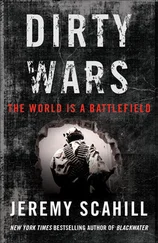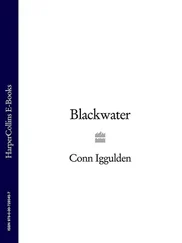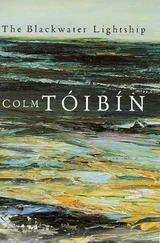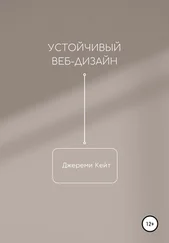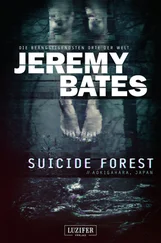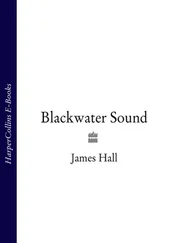But, experienced or not, flying in Afghanistan is substantially different from flying in most of the United States. Afghanistan is crisscrossed with mountain ranges that tower above even the highest point in the continental United States, which is California’s Mt. Whitney at 14,495 feet. By contrast, Afghanistan’s highest point is nearly 25,000 feet. Pilots also faced an additional hurdle in that there was limited communication with other aircraft and no air-traffic control to guide planes should they encounter a thick patch of clouds or other bad weather, which experts said could be incredibly variable in Afghanistan. This could cause serious problems very quickly because flights were often piloted using “visual flight rules”—in other words, pilots were on their own with little more than instinct and common sense to guide them. As one Blackwater pilot put it, “The flight crews know that if you can’t get over it or under it, then you turn around and come home. There’s no pressure to get the flight complete.” 14
While some bases in Afghanistan—like those at Kabul, Bagram, and Shindad—had ground control towers, others did not. Basically, according to Presidential’s pilots, “once the aircraft are twenty miles out of radar coverage, they are on their own.” 15Flying in Afghanistan was low-tech to the point where pilots often had to use satellite phones to report their locations when they landed anywhere but the most frequented areas, and even the satellite phones often proved unreliable. 16Aside from the impracticality of flying set routes, pilots also “don’t want to fly set routes for force protection reasons” 17—fear of being targeted by antioccupation or “enemy” forces.
Taken together, the weather, visual flight rules, threat of enemy fire, light turboprop aircraft with varying cargo and passenger loads, and extreme elevations made for a difficult combination even for experienced pilots. In essence, the Afghan skies were an unpredictable frontier. Indeed, all of Blackwater’s flights in the country were piloted using visual flight rules. “Therefore there were no prescribed routes of flight to and from Bagram or any of the other locations which we supported other than the sound aviation practice of flying as direct a route as possible while avoiding terrain and weather,” said Paul Hooper, the site manager for Presidential. “Common practice was to fly the most direct route possible. Terrain, weather and a desire to avoid establishing a flight pattern in an environment with hostile ground forces, were some reasons our flight crews varied the specific ground track of each flight.” 18
Among those hired by Blackwater to fly under these unusual and dangerous circumstances were two experienced CASA pilots, thirty-seven-year-old Noel English and thirty-five-year-old Loren “Butch” Hammer. Both men had experience flying under unorthodox circumstances with little ground support in variable weather and terrain, as well as landing in nontraditional locations. English had logged nearly nine hundred hours in a CASA 212—most of it as a “bush pilot” in Alaska—while Hammer had spent years piloting and copiloting “smokejumpers” during the summer fire seasons in the United States, “dropping smoke divers and para-cargo on forest fires,” according to Kevin McBride, another Blackwater pilot who had previously worked with Hammer. “He was a knowledgeable and skilled First Officer, with lots of experience in mountain flying and low level missions.” 19
After several weeks of training for the Afghanistan mission in Melbourne, Florida, Hammer and English arrived in Afghanistan on November 14, 2004. 20According to the U.S. Army, Presidential had a policy of not pairing any two pilots with less than a month “in the theater.” 21Presidential, however, paired Hammer and English, both of whom had been in the country for only two weeks, because they were the only crew the company had who, in addition to the CASA planes, could fly an SA-227 DC, or Metro plane, which could be used for flights to Uzbekistan. 22Presidential had two CASAs and one Metro plane in the theater. During their brief time in Afghanistan, Hammer and English had each logged thirty-three hours of flight time. 23
On November 27, the pilots woke up at 4:30 a.m. to a crisp and clear forty-degree day at Bagram airport—the main prison facility for people detained by U.S. forces in Afghanistan and an alleged site of prisoner torture. 24The Presidential crew would be leaving the base in a little less than three hours on a mission to transport a couple of U.S. soldiers and four hundred pounds of 81 mm mortar illumination rounds. The route would take them first to Farah, 450 miles southwest of Bagram, then to Shindad to refuel, and then back to Bagram, where they were scheduled to return at 1:30 p.m. Neither Hammer nor English had flown the route before. 25
Bunking with the men at Bagram the night before were two other Presidential pilots who would be leaving at about the same time as Blackwater 61 and traveling on a similar route. Like Hammer and English, pilots Lance Carey and Robert Gamanche would fly a Blackwater CASA westward that morning, stopping at Shindad to refuel. Carey, who shared a room at Bagram with both English and Hammer for the three days prior to the flight, said, “They were both looking forward to [it].” Gamanche ate breakfast with English on the morning of the flight. Both crews reviewed that day’s weather forecast. “Since our flights would eventually take us to the same place [Shindad] and the forecast was marginal due to visibility, we decided to make a group go-no go decision,” Gamanche recalled. “If the current weather at [Shindad] was not favorable, we would stay on the ground.” There were no weather problems reported at either of the crews’ initial destinations. “The current weather was favorable so we all decided to go,” said Gamanche. Though there were indications that at Farah and Shindad gusting winds and blowing dust could make landing difficult, at Bagram “the weather was forecasted as clear with unlimited visibility.” 26
The flight was a go. Melvin Rowe, a forty-three-year-old flight mechanic, joined the crew of Blackwater 61. Two passengers were slated to come on the flight, Spc. Harley Miller and Chief Warrant Officer Travis Grogan. They had loaded up the four hundred pounds of ammunition and begun to taxi when a soldier ran along the runway toward their plane. A third passenger would be joining them: Lt. Col. Michael McMahon, commander of the twenty-five-thousand-soldier Task Force Saber, which was responsible for the entire western region of Afghanistan—where Blackwater 61 was headed. 27McMahon, a Desert Storm veteran and West Point graduate, 28“was just an extra guy that showed up and [asked] if he could get on the flight,” one Blackwater employee explained. If they “ask us to do it and it’s not out of the common sense category, then they’ll do it.” 29There were now six people on board the plane.
At 7:38 a.m., Blackwater 61 took off from Bagram and headed northwest. The last thing the six of them would hear from anyone outside the flight was the Bagram tower telling them they would “talk to you later.” Five minutes after that, the plane dropped off Bagram’s radar, about nine miles out from the airport. 30Hammer, Blackwater 61’s copilot, quickly commented on the visibility, saying, “can’t ask for a whole lot better than this.” But it was apparent, even early in the flight, that the pilots didn’t quite know exactly where to go, as evidenced from the flight’s black box recording:
Pilot English: “I hope I’m goin’ in the right valley.”
Copilot Hammer: “That one or this one.”
English: “I’m just going to go up this one.”
Hammer: “Well we’ve never or at least I’ve never done this Farah… from Bagram so it would be a valley up here.”
Читать дальше



